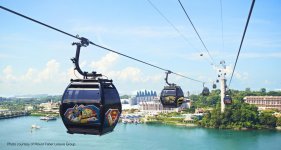keannu
VIP Member
- Joined
- Dec 27, 2010
- Member Type
- Student or Learner
- Native Language
- Korean
- Home Country
- South Korea
- Current Location
- South Korea
The Beam-Operated Traffic System, proposed by a group of Swedish engineers, does away with tarred roads and independently controlled vehicles, and replaces them with innumerable small carriages suspended from electrified rails along a vast interconnected web of steel beams crisscrossing the skyline. The entire system would be computer-controlled and operate without human intervention........................ It is true that the initial outlay for a section of the beam-operated system will be more than for a similar stretch of tarred road. However, costs for the proposed system must necessarily include vehicle costs, which are not factored into road-building budgets. Savings made will include all tunnels, since it costs about US $120,000 per kilometer to build a new six lane road tunnel. Subway train tunnels cost about half that amount, because they are smaller in size. Tunnels carrying beamed traffic will have a narrower cross-sectional diameter and can be dug at less depth than existing tunnels, further reducing costs.
Q. Beamed traffic will travel through tunnels costing less to build than subway tunnels. (T)
==============================================
The answer is true for the question. Considering the last sentence's "further reducing costs", beamed tunnels seem to cost less. But in the previous sentences, do "all tunnels" mean "beamed tunnels" or "ordinary road tunnels"? This part seems to imply the opposite meaning that beamed tunnels are more expensive than subway tunnels.
* If you want to see how beamed traffic look, please visit this website.
http://www.ielts-mentor.com/reading...ng-sample-14-the-beam-operated-traffic-system
Q. Beamed traffic will travel through tunnels costing less to build than subway tunnels. (T)
==============================================
The answer is true for the question. Considering the last sentence's "further reducing costs", beamed tunnels seem to cost less. But in the previous sentences, do "all tunnels" mean "beamed tunnels" or "ordinary road tunnels"? This part seems to imply the opposite meaning that beamed tunnels are more expensive than subway tunnels.
* If you want to see how beamed traffic look, please visit this website.
http://www.ielts-mentor.com/reading...ng-sample-14-the-beam-operated-traffic-system
